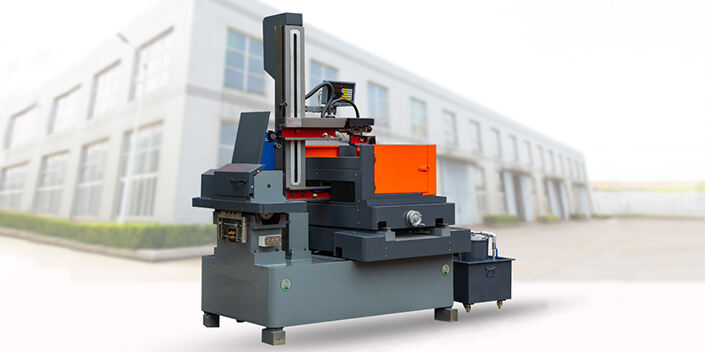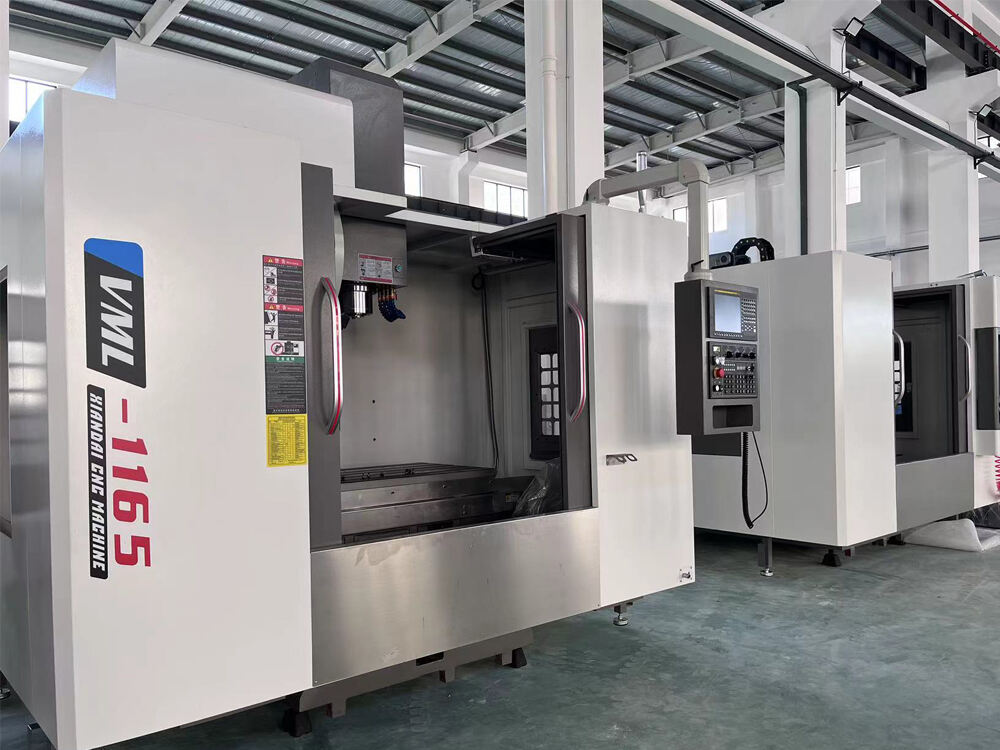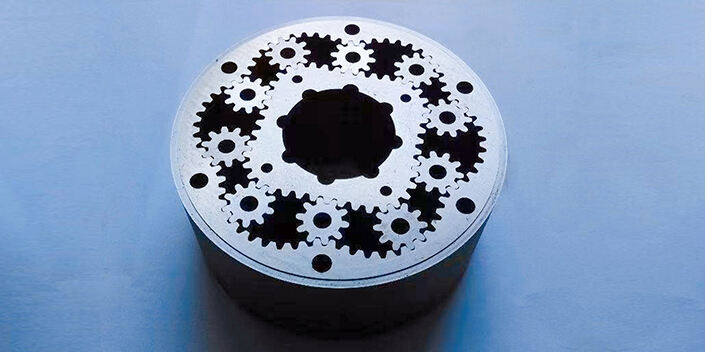Understanding EDM Die Sinking Machines
EDM Die Sinking or sinker EDM works by using electrical sparks to cut through metal with amazing accuracy. The process really shines when dealing with complex shapes and deep cavities in tough materials where traditional cutting tools just don't work well enough. What makes this method so valuable is its ability to produce extremely detailed parts with tight tolerances. That's why many manufacturers in fields like aerospace engineering, car manufacturing, and electronic device production rely on EDM Die Sinking for their most demanding projects. These industries need components that fit together perfectly, often down to fractions of a millimeter.
At the heart of EDM die sinking machines are two main parts: electrodes and dielectric fluids. These elements work together during the machining process. Most electrodes are either graphite or copper based since these materials shape the metal workpiece effectively. When working, the electrode sits in dielectric fluid which does double duty it keeps things insulated between electrode and workpiece while still letting those sparks happen when voltage gets high enough. A study in Applied Sciences backs this up, noting that EDM processes depend a lot on how good the electrodes and dielectric fluids perform for getting rid of material properly (Qudeiri et al., 2020). What makes EDM special is that it can drill and craft intricate parts without touching them directly. This means no mechanical stress builds up in the material being worked on, something that's really important for delicate or complex components.
The Impact of New Materials on EDM Die Sinking Machine Molding
What kind of material gets chosen makes all the difference when it comes to EDM Die Sinking work. The right materials determine how precise the machining will be and what kind of finished product comes out at the end. Materials affect things like electrical conductivity and heat handling characteristics, and these factors really matter for how well the EDM process works overall. Take copper for example it's often used as an electrode material because it conducts both heat and electricity so well, which helps achieve better machining accuracy in practice. On the flip side, going with cheaper or lower quality materials tends to cause problems down the line. Machines just don't last as long before needing replacement, and the parts produced aren't as accurate or consistent either. Shops that cut corners on material selection usually pay the price later through higher maintenance costs and customer complaints about part quality.
Over time, the materials used for EDM processes have changed quite a bit, making operations run better and save money too. Back in the day, folks mostly went with graphite or copper because they conduct electricity so well. But now there are these new materials with better internal structures like advanced graphite composites and various metal alloys that work much better. The newer stuff lets machines cut through material faster and finish jobs quicker, which obviously cuts down on expenses. Some tests show that when manufacturers switch to ultrafine materials instead of regular superfine ones, they can boost machining speed around 15% give or take depending on conditions.
Research shows pretty clearly how new material tech has boosted EDM performance. A recent comparison looked at superfine versus ultrafine electrode materials and found some real differences in surface finishes and processing times. The ultrafine stuff managed to hit a much better surface finish rating of around 27 VDI compared to just 31 VDI for the superfine version, which means less post-processing work needed for polishing. What's even more impressive is that using ultrafine materials cut down the EDM process time by about 15%. That kind of improvement translates directly into real money saved on manufacturing costs and faster production cycles for companies working with these materials.
Exploring Recent Advancements in EDM Materials
The latest developments in EDM material science have brought about new options like graphite composites and special alloy blends. These materials are really changing the game for EDM work because they handle the tough requirements better than traditional options. Take graphite composites for instance they conduct electricity super well while staying stable under heat, which makes them perfect for those intense EDM operations where precision matters most. Specialized alloys on the other hand stand up to wear and tear much longer than standard materials. This means parts last longer before needing replacement, cutting down on production stoppages and maintenance costs over time.
When manufacturers start using modern materials in EDM operations, they tend to see some pretty good improvements. Tools last longer, machines stay stable at higher temperatures, and electricity flows better through the system. All these factors make the whole machining process work smoother and produce parts with tighter tolerances. Take copper based alloys for instance. These high strength versions conduct heat so well that excess heat gets pushed away faster during cutting. This means less warping and better dimensions on finished components. Shops that have switched over report real differences in their production quality. Most machinists will tell anyone who asks that material choice makes all the difference when working with EDM systems.
The actual advantages we see from these new materials aren't just theoretical claims but something backed up by real world tests and feedback from professionals working in the field. Take high strength copper alloys for example when applied to EDM work. Shops report faster cutting speeds and tools lasting much longer than older alternatives. Many machinists who've switched over notice significant differences in their day to day operations. This has led to more shops making the switch to these advanced materials despite initial costs. The ongoing development of better materials continues to transform how effective and reliable EDM processes can be across different manufacturing settings.
Key Considerations for Material Compatibility in EDM
When it comes to Electrical Discharge Machining or EDM as it's commonly called, material compatibility matters a lot, especially when looking at how conductive different substances are. The level of conductivity really affects how energy moves through the system, which ultimately determines how well the machine works overall. Good conductivity means the electricity can flow properly while cutting, leading to cleaner edges and better surface quality on finished parts. That's why many shops go with graphite or copper for their electrodes most of the time. These materials conduct electricity so well they create strong sparks needed for EDM operations and help remove material from workpieces much faster than other options available in the market today.
The toughness and how well materials perform can make a big difference in how much stuff gets made through EDM processes. Materials come in all sorts of varieties, each with its own characteristics that decide how long they last when being machined and how resistant they are to wearing down. Take carbide tools and hardened steel for instance these are pretty tough cookies in the manufacturing world. They hold up really well against constant EDM work, which means factories can run them nonstop without worrying about tool replacement too often. The bottom line is that tougher materials mean fewer interruptions when machines need maintenance, so overall production just keeps moving along smoothly without those costly delays.
Most industry pros and top machinery makers stress the importance of picking materials according to their key properties such as how well they conduct electricity and how long they last. Take it from the big names in EDM machines: they often point toward copper-tungsten and silver-tungsten alloys when someone needs something that conducts heat really well but also stands up to wear and tear over time. The right choice here makes all the difference in keeping machining operations running smoothly while still getting those quality finishes everyone wants. After all, nobody wants parts that fall apart after just a few uses or ones that don't meet basic specs for toughness and accuracy requirements.
Challenges and Solutions in EDM Machining with New Materials
Working with new materials during Electrical Discharge Machining or EDM brings plenty of headaches for operators. The main problems tend to be tool wear and general degradation over time. Why does this happen? Well, many modern materials just plain resist machining because they're so abrasive and hard. Take a look at what happens when shops try to work with advanced ceramics or composite materials through standard approaches. These tough substances really take their toll on equipment, causing tools to break down much faster than expected. Operators often find themselves replacing worn out components far more frequently than planned, which eats into productivity and increases maintenance costs across the board.
There are several ways to tackle these issues head on. Changing machining settings works wonders sometimes. For instance tweaking things like electrical discharge current levels or how long those pulses last makes a big difference in reducing tool wear over time. Manufacturers have also started creating better tools lately. Think coated wires or special tools designed to handle heat better. These improvements mean less downtime for maintenance and smoother operations overall. When dealing with modern materials that push equipment to its limits, having tools that actually stand up to the punishment becomes absolutely essential for any shop looking to stay competitive in today's market.
Looking at the numbers, traditional materials generally fail more often than newer engineered options during EDM processing. Research from the Journal of Advanced Manufacturing and Technology found that composite materials cut down on failures by around 30% when paired with the right processing settings. These findings point to something manufacturers need to consider seriously. As companies work with these cutting edge materials in EDM applications, they'll find their current machining methods and equipment just aren't cutting it anymore. The industry needs to adapt its approaches if it wants to keep up with what modern materials demand.
Future Trends in EDM Die Sinking Technologies
New tech developments in Electric Discharge Machining (EDM) such as automated systems and artificial intelligence monitoring are changing what we expect from machining efficiency. When manufacturers integrate automation into their EDM setups, they get smoother day-to-day operations since there's less need for constant human supervision. This leads to parts that come out looking and performing more consistently across batches. On the other side of things, AI powered monitoring tools give operators live data on machine performance while also predicting when maintenance might be needed before breakdowns happen. These smart systems help keep production running smoothly most of the time, which means fewer interruptions and happier customers waiting for their custom machined components.
Advanced materials are poised to significantly influence EDM processes, particularly in enhancing opportunities for customization and rapid prototyping. These materials not only offer superior qualities like higher durability and thermal stability but also bring the potential for innovative design implementations that traditional materials cannot provide.
The latest industry data points to substantial expansion in EDM technology across key markets including aerospace and medical device manufacturing. Experts in the field, notably Brian Solis, estimate potential growth rates around 6.2% per year, mainly because manufacturers need increasingly intricate components that traditional methods struggle with. Looking ahead, EDM tech seems well positioned to tackle emerging demands from advanced materials like titanium alloys and biocompatible metals. As material science continues pushing boundaries, EDM processes will likely adapt through innovations in electrode design and power control systems, making them indispensable tools for tomorrow's precision engineering requirements.
Table of Contents
- Understanding EDM Die Sinking Machines
- The Impact of New Materials on EDM Die Sinking Machine Molding
- Exploring Recent Advancements in EDM Materials
- Key Considerations for Material Compatibility in EDM
- Challenges and Solutions in EDM Machining with New Materials
- Future Trends in EDM Die Sinking Technologies





